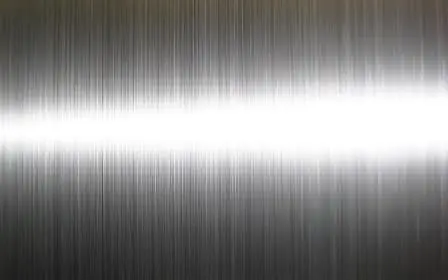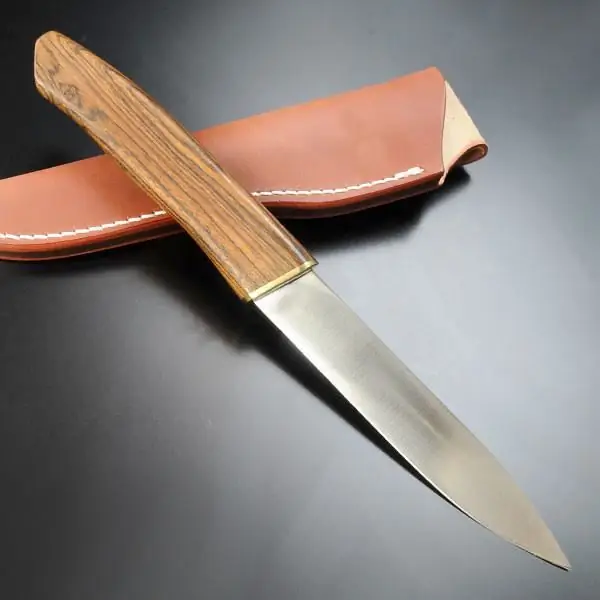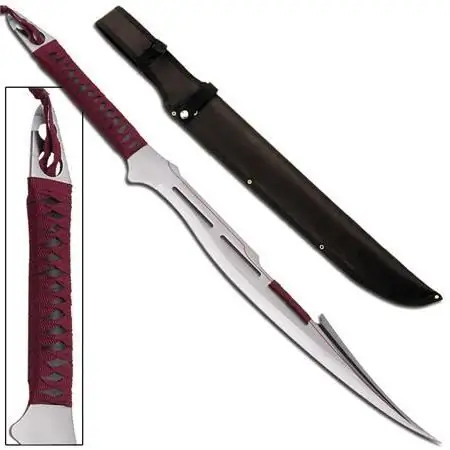2025 Author: Howard Calhoun | [email protected]. Last modified: 2025-01-24 13:10:41
Channel is one of the most popular types of metal products. This kind of rolled metal products is distinguished by durability, a wide range and affordability, thanks to which it has found application in many areas of construction and industry.
Definition and assortment
The channel is a metal product, the profile of which looks like the letter P. The horizontal jumper of this letter is called the wall, and the sides that form the legs of the letter P are called the shelf.
The companies involved in the production of these products offer a wide range of products that differ from each other in a number of characteristics:
- production material;
- manufacturing method;
- dimensions (this concept includes wall thickness, shelf width and height).
These indicators directly affect the cost of metal products and their operational features.

What to look for when buying?
With regard to the channel (as well as other sections of the beam), there is one general selection condition. Based on a specific engineering problem. In the case when the parameters of the channel are inferior to the nearest standard version by less than 5%, then it is worth choosing this particular item number. If the discrepancies in the parameters are more than 5%, then this number is abandoned in favor of the next one.
What the channel is made of
On the goods market you can find 2 types of channel:
- aluminum alloy;
- steel.
Steel channel has become much more widespread among consumers, as it is distinguished by an affordable price and high rates of strength and durability. In turn, steel products also differ in the type of steel used. This is:
- carbon steel channel - the quality of such products is regulated by GOST 380-2005;
- channel from low-alloy steel grades - in this case, quality control is carried out on the basis of GOST 19281-89.
Features and Specifications
The active use of steel channel in the construction and manufacturing sector is due to a number of advantages. The fact is that this particular type of metal products surpasses other types of rolled metal in some indicators.

- High rigidity. The channel has one of the highest deflection strength (stiffness). This is due to the structural features of the product - the separation of the metal from the axis of inertia is the maximum possible here. Only an I-beam has a higher indicator, however, compared to a channel, it is much more difficult to manufacture it, which inultimately affects the cost of production.
- Versatility. Thanks to the U-shaped profile, the steel channel is convenient to use in production. It is easy to weld another part to it to create a particular design. The same I-beam in this respect noticeably loses. This allows you to find the use of the U-shaped profile not only in construction, but also in mechanical engineering, the production of special equipment and many other fields of activity.
- Large range of steel channel. Manufacturers offer many different types of this type of metal products, so for any purpose you can choose the most optimal product option both in terms of cost and technical characteristics.
Hot-rolled channel
In production, 2 types of technologies are used, in connection with which the channel is usually divided according to the type of production into 2 main types:
- hot rolled (this type of steel channel gauge is rarely used);
- cold-formed, or otherwise - bent.

Hot-rolled technology involves the production of high-quality rolled metal from special billets, which are rolled on special machines. The dimensional accuracy of such products varies:
- A - this marking corresponds to the channel with high accuracy of dimensional parameters;
- B - dimensional parameters of increased accuracy;
- B - regular indicators.
Products with rolling accuracy A and B are metalproducts of the highest quality, so the cost of such a channel will be an order of magnitude higher.
Regulates the quality of steel hot-rolled channel GOST 8240-97.
Bent channel
Bent channel is a rolled metal with a U-shaped section, made using cold deformation technology. This technology differs significantly from hot-rolled technology. To do this, sheet steel is used as a feedstock, which is cut into strips and then rolled on special bending machines. This happens at normal temperature by pressing and running.
There are several differences between bent steel channel.
- Visually, this type of rolled metal can be recognized by the rounding of the outer corners.
- No product defects. This characteristic is explained by the timely correction of shortcomings during rolling on the machines. It is this feature that can be considered an undoubted advantage, since it will not be necessary to correct the shortcomings later.
- The prices of bent products are an order of magnitude lower, as production costs are lower.
Application areas
To choose the best product option, you should consider their features. Hot-rolled steel channel has increased resistance to lateral and axial deformations. This is what makes it indispensable in the construction of bridges, industrial buildings and other objects that experience increased loads.
A bent channel is somewhat inferior to a hot-rolled one in terms of strength, so it is used if there are increased requirements forthe object is not. When you can safely choose a bent type of products:
- as additional reinforcing elements in the construction of frames;
- when reconstructing residential and industrial construction sites - this move allows you to reduce the load on the foundation of the building;
- in the automotive and railcar industry;
- when finishing work (installation of partitions in residential, industrial and commercial buildings) - in this case, it will be possible to build strong, reliable partitions without a heavy load.
Product series
To choose rolled metal products that exactly meet the requirements, it is worth considering the existence of various series. They differ in the presence or absence of a slope of the shelves and the size of the profile.

According to GOST, the steel channel is represented by several separate series, which are indicated in capital letters:
- P - the shelves of such a product have a parallel arrangement (the classic and most common option);
- L - lightweight (light) series, where the shelves are arranged in parallel (in such products, the shelves and the wall are thinner than usual);
- E - an economical series with parallel edges (in this case, the shelves have a smaller thickness, and the shelf is normal);
- U - channel, the edges of the shelves of which can slope (no more than 10%);
- C - special purpose items.
Channel dimensions
During production, several parameters are taken into account. This is the total length of the product, the height of the channel (an indicator between the outer sides of the product),thickness of shelves and partitions.
Height can vary between 50-400mm, and shelf width does not exceed 32-115mm.




The length of the produced channel can be different. Depending on this indicator, a dimensional and non-dimensional channel is distinguished. According to GOST, the assortment of a steel channel can have a measured length of 4-12 meters (most often exactly 12). However, sometimes you can find products with a length of 11.7 meters. Random length can be at least 3 and not more than 12 meters. When buying a batch of rolled metal, it can contain not only measured, but also non-dimensional channel, however, its quantity should not exceed 5% of the total purchased volume of products.
Galvanized products
Among the wide variety of rolled metal products, galvanized products occupy a special place. Their distinguishing feature is the presence of a zinc coating. This layer is applied to the surface during the manufacture of products and is primarily protective.
Zinc coating protects the metal structure from moisture and prevents corrosion. Thanks to this, it is possible to significantly increase the strength of the object and its service life. Choosing a zinc-coated channel is recommended in cases where the object is constantly exposed to moisture.
When buying rolled metal, you should be very careful about the choicesupplier and the quality of the purchased products. Each batch must be accompanied by quality certificates for compliance with GOST. In addition, it is important to check that the products do not have visual defects, as this will directly affect the quality and durability of the finished structure.
Recommended:
Food stainless steel: GOST. How to identify food grade stainless steel? What is the difference between food stainless steel and technical stainless steel?

The article talks about grades of food grade stainless steel. Read how to distinguish food stainless steel from technical
Corrosion resistant steel. Steel grades: GOST. Stainless steel - price

Why metal materials break down. What are corrosion-resistant steels and alloys. Chemical composition and classification according to the type of stainless steel microstructure. Factors affecting pricing. Steel grade designation system (GOST requirements). Application area
Reinforcing steel: brand, GOST, strength class. Steel reinforcement

The article will tell you what reinforcing steel is, what it is, what GOSTs regulate its parameters
Characteristics of steel 65x13: properties, hardness. Reviews about knives made of steel 65x13

In modern metallurgy, a huge number of steels are used. Their characteristics, as well as the variety of nomenclature, are truly immense
440 steel - stainless steel. Steel 440: characteristics

Many people know 440 steel. It has established itself as a reliable, anti-corrosion, time-tested hard material, which is most often used for the manufacture of knives for various purposes. What is the secret of this alloy? What are its chemical, physical characteristics and applications?

